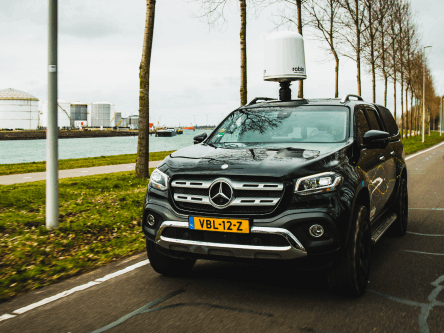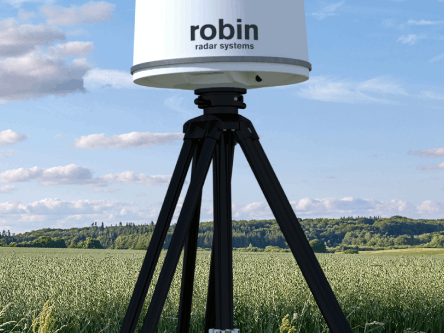Spot drone threats before they escalate. IRIS combines micro-doppler classification, deep neural network (DNN) technology, and on-the-move (OTM) capability for 360°, 3D coverage in one small but mighty package.


.png)
Considering counter-uas radar?
Managing drone threats with speed and precision takes a system of sensors. We focus on detection, building each counter-UAS radar to sit at the heart of your network. With state-of-the-art hardware and software, our radars deliver early warnings and reliable intelligence. They’re lightweight, made to integrate, and adapt to your needs and setup.
360° coverage in 3D
Combining 360° views, 60° elevation, and a 5km (3.1-mile) instrumented range, IRIS gives you a huge 78km² (30.1 sqm) coverage area. That’s a full grasp of what’s happening all around you, all year round.
Classify with conviction
Micro-doppler classification and DNN technology mean IRIS can distinguish blades and rotating parts. IRIS isn’t phased by birds and detects fixed-wing and hovering drones.
Intuitive interface
When every second counts, you can't afford delays. With an intuitive, interoperable user interface, IRIS gives you easy access to real-time tracking data – for fast and effective responses to drone threats.
Detect at 100 km/h
IRIS detects, tracks and classifies at speeds of up to 100 km/h (60 mph) with our OTM add-on. This radar rises to any occasion, whether in a static position or on the move. Whatever the challenge, IRIS has the solution.
Watch IRIS in the making
In a world where technology is booming, defence and security teams face ever-more elusive, intelligent, and drastic threats. To innovate IRIS, we went back to the drawing board and asked ourselves: what does a future-proof drone radar look like? Small, deployable; a radar that doesn't compromise in any way.
Made for accuracy
IRIS combines durable hardware with smart software for reliable 3D detection. Micro-doppler and DNN technology distinguish blades, and IRIS pairs 360° coverage with accurate height information to cue other sensors and countermeasures seamlessly.
- Micro-doppler classification
- 3D accurate height information
- Tested and certified against military environmental standards
- ISO 27001 and ISO 9001 compliant
.webp?width=733&height=484&name=Rectangle%20101%20(1).webp)
Small, lightweight, built to integrate
Deployment takes less than 15 minutes, giving your team quick, actionable insights. Easily mount our IRIS radar on buildings, tripods, and even vehicles. With our OTM module, IRIS performs at speeds of up to 100 km/h (60 mph).
- Lightweight and deployable at 29kg (64lb)
- Compact design (550mm/22" x 630mm/25")
- OTM capable
- An API made to integrate (incl. C2)
IRIS Specifications
-
-
Technology
- FMCW
-
-
-
Frequency
- X-band
-
-
-
Power output
- 2x 12w
-
-
-
Rotation / Scan speed
- 30rpm / 1.0s
-
-
-
Instrumented range
- 5km
-
-
-
Azimuth Coverage
- 360-degrees
-
-
-
Elevation coverage
- 60-degrees
-
-
-
Dimensions
- 550mm diameter x 630mm height
-
-
-
Weight
- 29kg
-
IRIS is classified as Dual-Use. Concerning Export Control Robin Radar complies to the Dutch legislation and European Directive 2021/821.

Partnerships forged in radar
"Our collaboration with Robin is characterised by a shared dedication to ensuring airspace security through cutting-edge technology. Robin provides valuable feeds into our AI/ML driven C2 to further enable us to provide the most accurate CUAS solutions for a variety of security."
Dedrone Chief Marketing Officer & Head of Government Affairs, Mary-Lou Smulders
Level up your radar with our IRIS add-ons

Detect on the move
Put your radar on the move with our OTM module. Mount on convoys or vehicles to detect, track and classify at speeds of up to 100 km/h (60 mph).

Customise colour
Customise your IRIS radome to suit your operational needs. Our bespoke colour palette includes white, bronze green, sand beige, or brun terre de France.

Pair with our tripod
Deploy effortlessly with our optional IRIS tripod. Set up securely at any site in minutes, with an adjustable height of 1.35m to 2.40m.